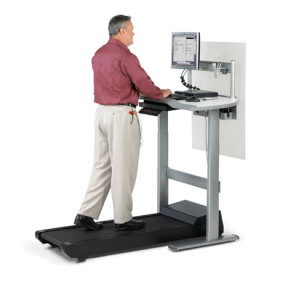 A few months back, I wrote about how the current cycle of tech disruption is significantly faster and broader than previous cycles. As a result, new products and technologies are causing us to re-imagine almost everything we do in business and in daily life.
A few months back, I wrote about how the current cycle of tech disruption is significantly faster and broader than previous cycles. As a result, new products and technologies are causing us to re-imagine almost everything we do in business and in daily life.
Well, prepare to be disrupted, starting with where you spend most of your working day.
I just finished reading “A Revolution Is Happening In Offices Everywhere,” part of the “Future of Business” series being sponsored by the global software firm SAP. If what authors Aimee Groth and Max Nisen say is true, the traditional office environment is going away for good. And going with it are many other things we take for granted that make up our economy and our work world.
The basic theme of the report is that the traditional work office is on its last legs. The workplace of the future will be less centralized, more mobile, and more flexible than anything we previously imagined. And this trend will only accelerate due to the rapid uptake of mobile technologies like smartphones, tablets, and other data- and file-sharing platforms.
Perhaps the biggest change is that the work office will no longer occupy a fixed location. Which should come as no real surprise. Anyone who has answered a business email at home or conducted an important client call from the airport already knows that mobile technology is enabling us to work with anyone, anytime, anywhere. Only now it’s going to become the rule rather than the exception. However, this doesn’t mean that corporate offices will completely disappear.
Despite Yahoo’s misguided attempt to force all employees to work in a traditional manner (as if achieving camaraderie, innovation, and higher productivity only happen in person), changes are occurring almost daily at most work sites. Companies will still need a centralized location for people to interact and create the sense of team that every successful organization needs. But it will look, feel, and operate very differently than the one we’ve known in the past.
For starters, say the authors, office design will become more important in terms of how work gets done. Instead of isolating people in walled-off offices and cubicles, companies will opt for open space to encourage creativity and communication. Office furniture will become more movable and comfortable, leading to fewer assigned desks or cubicles. Even the traditional desk will undergo transformation, with many companies opting for things like treadmill desks that enable employees to mix working with walking.
The primary challenge for most companies will not be figuring out how to reconfigure their offices to meet the needs of today’s work environment. It will be letting go of the old thought bubbles that tell us this is not the way an office should be.
Today’s offices tend to be organized around power and prestige rather than working efficiently. They keep people isolated. They don’t foster creativity or communication. And they serve to reinforce status and hierarchy rather than building a sense of team. (I was recently visiting a client that still has ‘executive parking spots’ and this client is struggling enormously with how to keep up and remain relevant in today’s world.) In most organizations, threatening the status quo is verboten. So mention the idea of treadmill desks to senior executives in their 50’s or 60’s and you can just hear the thought bubbles start to flow:
- That’s absurd! You can’t walk and work at the same time.
- Employees should exercise on their time, not the company’s.
- Desks don’t look like that.
- It will cost too much.
- I’m not paying my employees to work out.
- That might work for Google or Facebook, but it doesn’t fit our environment.
These kinds of impending changes to the office environment may seem a bit over the top. But consider that this revolution is backed by hard data, not soft. Meaning that it will happen, rather than might. Just look at the hard data showing the explosion in the use of mobile devices, the trend toward “robotizing” low skilled jobs, and the increasing number of freelance, contract, and virtual workers and it’s hard to come to any other conclusion.
So the question for business leaders is not whether this is going to happen, but when. And more specifically, when is it going to happen to my business? Companies like Google saw the writing on the wall a long time ago, and have designed their work environments accordingly. Is it any wonder that they manage to attract and keep top talent?
If you haven’t read this report (http://www.businessinsider.com/the-future-of-the-workplace-slide-deck-2013-2?op=1), I highly recommend it. The workplace changes it outlines are already happening. And, as I constantly tell my clients and keynote audiences, it’s easier – and a lot more fun – to lead the way instead of playing catch-up.
Call to action: Read the report. Then decide what it means to your business.






